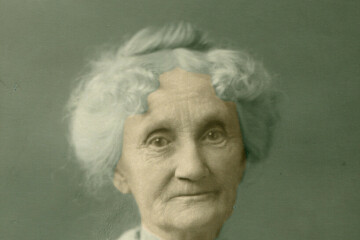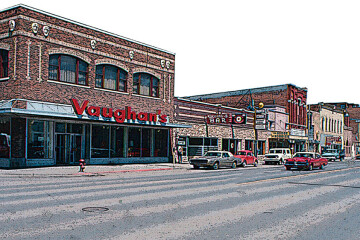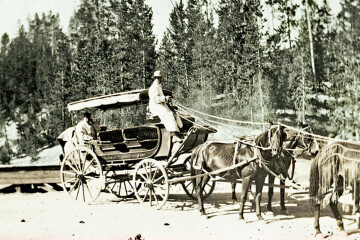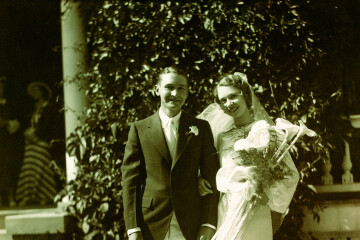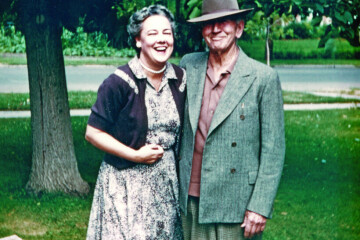Legendary Locals of Bozeman’s Past
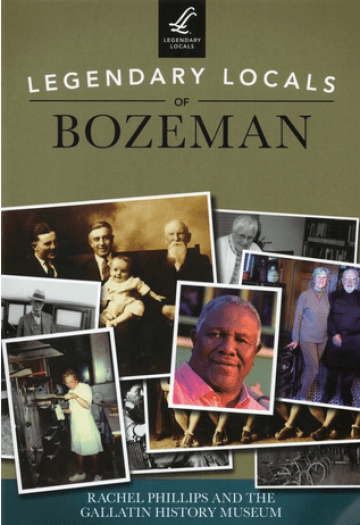
From its inception as a supply town during Montana’s gold rush in the 1860s, Bozeman has attracted visionaries, leaders, and pioneering thinkers. Now one of Montana’s fastest growing cities, Bozeman still retains elements of the past while looking to the future. Streets named Alderson, Rouse, and Willson pay homage to early founders, while new start-up companies coexist with 100-year-old businesses. Educators and pioneering thinkers stimulate new ways of thinking, and artists, musicians, and entertainers add to the local culture. Sports legends and outdoor athletes continue to amaze, and inspiration emanates from extraordinary individuals. Included here are several excerpts from the book Legendary Locals of Bozeman, the newly released title by Research Coordinator at the Gallatin History Museum, Rachel Phillips.
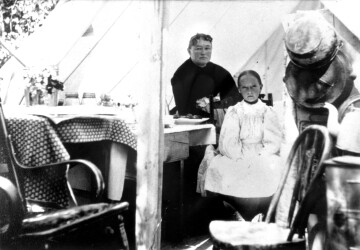
Sarah Tracy - In 1869, Bozeman was beginning to resemble a community. Businesses sprang up and men journeyed east, each one eager to return with a wife. One such spouse was Sarah Tracy, bride of local businessman William H. Tracy. Upon her arrival in Bozeman, she was greeted at the hotel by a crowd of men and only two other women. Seventeen-year-old Sarah never forgot her first meal in town. She wrote in her diary: “When supper was served a little later…every stool around the two long tables was occupied – Mrs. [Sophia] Guy, Mrs. [Ellen] Story and I being the only ladies. It did look somewhat like curiosity…I wonder if they thought Mr. Tracy’s investment was a good one…” Hotel proprietor John C. Guy admitted to Sarah Tracy afterward that such a large guest list (more than 70 men) was irregular. Sarah later went on to write a fascinating reminiscence about her trip to Yellowstone in 1873.

Hubert Dennis - During the slim times of the Great Depression, one local man made extra money in the boxing arena. Hubert Dennis grew up near Ennis, Montana, where he began boxing at age 16 at the urging of his cousin. Dennis rapidly learned the intricacies of boxing, and after only six amateur lightweight matches, he turned pro. Nicknamed “Kid” and the “Bozeman Wildcat,” Dennis racked up over 100 fights during his career, losing only 10. According to a 1983 Bozeman Daily Chronicle article by Rob Dean, Dennis won a match in Butte against Peter Jackson in 1936, replacing his opponent as the world’s fourth-ranked fighter in his lightweight class. He retired from professional fighting at age 30 and became a bridge supervisor with the Gallatin County Road Department. Besides coaching boxing, Dennis enjoyed ranching and training horses on his property south of Bozeman until his death in 1988.

Audrey Anderson - Bozeman’s favorite red-headed restaurant owner Audrey Anderson grew up in an orphanage in Twin Bridges, Montana. She worked as a telephone operator before marrying her first husband, who died after an accident on their honeymoon. In 1960, Audrey moved to Bozeman and purchased the only locally-owned pizza place. Over the next 30 years, Audrey’s Pizza Oven employed scores of young people and provided a venue for hundreds of first dates. Anderson’s tough-love management style made her a substitute parent for many kids. Loyalty to Audrey pried sleepy employees from their beds on freezing winter nights when customers needed a pizza delivered. She still tossed pizza dough in the air at age 88, but Audrey’s Pizza Oven closed in 1990. In 2010, however, the restaurant reopened, reviving Audrey’s original recipes and putting her pizza boards to use once again.

Eleanor Buzalsky - Eleanor Buzalsky, or “Buzz,” grew up in North Dakota, where she began teaching right out of high school. Her brief marriage to Edward Buzalsky began just before World War II, where Edward was tragically killed in 1944 while serving as a tank commander in Belgium. Eleanor never had children, but after 38 years of teaching and coaching, she always said “she had lots of children.” Beginning in 1953, she taught physical education at Bozeman Senior High School for 30 years, coaching generations of Bozeman teenagers. Even in retirement, she never lost her passion for sports and religiously cheered on local high school and college athletes. The author fondly remembers Eleanor listening to Montana State University football games on the radio while working on genealogy projects at the Pioneer Museum (now the Gallatin History Museum). “Buzz” passed away in 2008 at age 87.
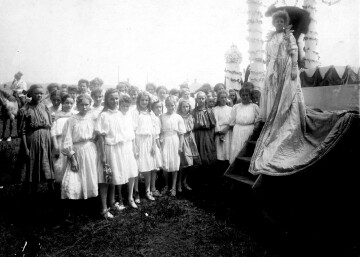
Sweet Pea Queen Kathryn Hanley and the Sweet Pea Carnival - In August of 1906, the first Sweet Pea Queen, Kathryn Hanley, was crowned in an evening ceremony in downtown Bozeman. The Avant Courier newspaper reported that the event included a speech by Sen. Thomas Carter, who complimented the idea of the Sweet Pea Carnival, saying, “morbid tendencies will be dispelled and healthy thought will obtain…bad people do not love poetry and sweet peas.”
The Sweet Pea Carnival began as tourist event. The local Commercial Club longed for a signature Bozeman celebration, one that would attract out-of-town visitors—and their wallets. August seemed a good month, when it was dry and the fragrant sweet pea flowers were at their finest. Bozeman residents worked all year to prepare for the celebration, making hundreds of decorative paper blossoms with which to festoon carriages and floats. During the parade, spectators admired decorated storefronts while bands and floats passed down the column-lined street and underneath a temporary welcome arch.
Though the annual event was a success, 1916 marked the final year of the Sweet Pea Carnival. World War I halted celebrations, and the carnival soon became a distant memory. In 1978, a small group of local citizens revived the event under a new name, the Sweet Pea Festival of the Arts. Today, Sweet Pea is bigger than ever, emphasizing art, theater, and music. Though the celebration has evolved over time, a parade and a sweet pea flower theme still pay homage to the original carnival.
What happened to the first Sweet Pea Queen, Kathryn Hanley? Following her reign, “Katie” married a local boy, Ralph McComb. Sadly, their marriage was short-lived and Katie and Ralph died four months apart during the influenza epidemic in 1918 – 1919, leaving two small boys.

Larry O’Brien - In July of 1892, during Bozeman’s campaign to be voted Montana’s state capitol, the city inaugurated three brand-new electric streetcars. Trolley routes crisscrossed the town, stretching from the Northern Pacific depot on the city’s north side to “Capitol Hill,” the high ground now occupied by Montana State University. One motorman in particular impressed passengers. To Larry O’Brien, trolley riders were more than just fares—they were friends. Seemingly all-knowing, O’Brien became a living alarm clock, taking extra time on his trips to stop his streetcar and awaken sleepy patrons whom he knew were planning to board his trolley on the return trip. After college dances and social events, O’Brien and his streetcar would pause patiently, waiting to take students home, while college President James Reid announced, “Young people, Larry is waiting at the foot of the hill.”



